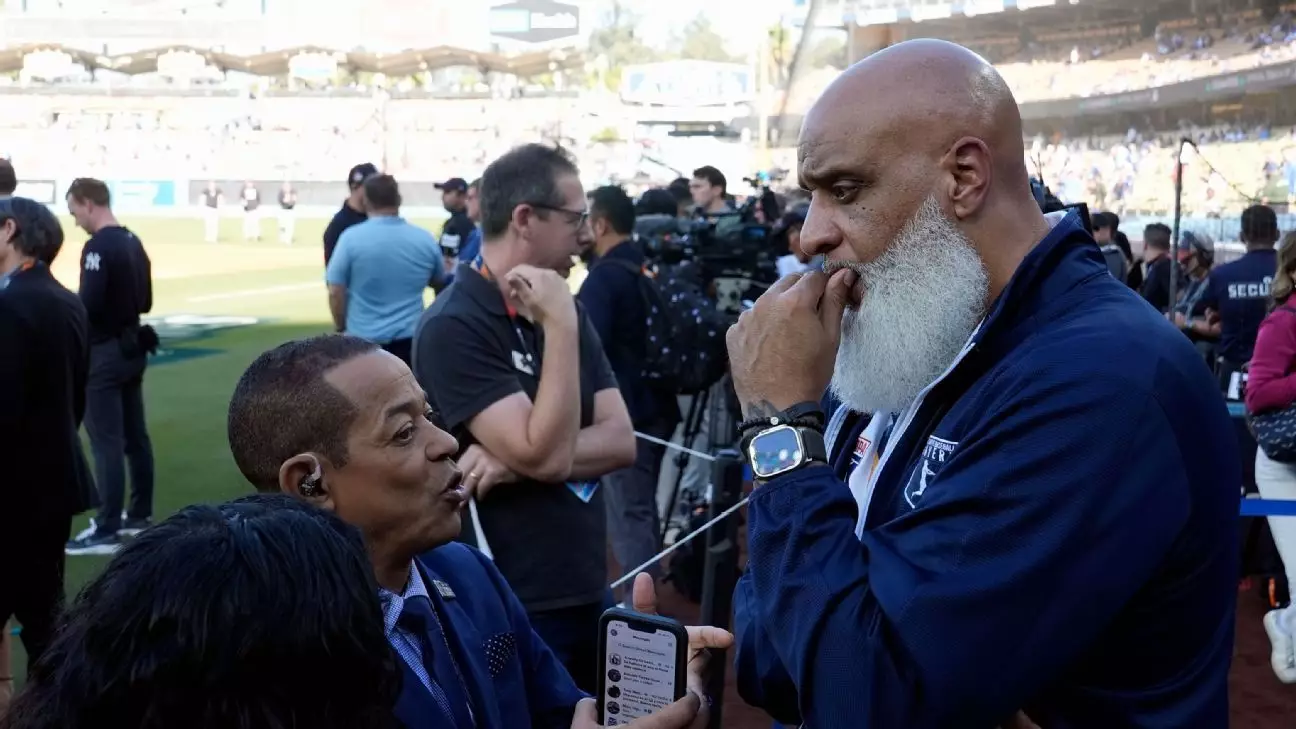The Increasing Dangers of Modern Pitching: A Call for Change in MLB
Baseball has been an integral part of my life for as long as I can remember. I grew up watching games with my family, captivated by the skill and strategy on display. However, recent changes in Major League Baseball have raised concerns that hit close to home for many fans like me. The way pitchers are utilized today is causing a stir within the community, and it’s time we address these issues head-on.
As someone who cherishes the longevity and integrity of the sport, it pains me to see players pushed beyond their limits. Tony Clark, executive director of the MLB Players Association, has voiced these concerns, particularly around how pitchers are being overused. Standing on the field at Dodger Stadium during the World Series, he highlighted the urgent need for change to protect both players and the league itself.
Clark’s words resonate deeply with those of us who understand the physical toll that baseball can take. It’s not just about preserving the game; it’s about safeguarding the athletes who dedicate their lives to it. This discussion isn’t just a fleeting moment—it’s a call for action that could shape the future of baseball and preserve its essence for generations to come.
Key Takeaways
- Modern pitching strategies focus heavily on max-effort performances.
- This approach has led to increased injuries and surgeries among pitchers.
- There is a need for a cultural shift that prioritizes player health and longevity.
The Trend of Overexertion in Pitchers
The landscape of pitching has dramatically changed, with a noticeable trend towards overexertion. Gone are the days when pitchers were given ample recovery time between games. Now, they’re often pushed to their limits, with max-effort pitching becoming the norm. This shift raises significant concerns about player health and safety, as teams prioritize short-term performance over long-term wellbeing.
Tony Clark’s remarks highlight this systemic issue within team management. Decisions are driven by immediate results rather than considering the broader implications for player health. The emphasis on analytics and performance metrics has overshadowed traditional values like quality starts and endurance. It’s a troubling transformation that calls into question where our priorities truly lie.

While advancements in training methodologies have led to faster pitches and more strikeouts, they come with a downside—an increase in injuries. The prevalence of Tommy John surgeries is a stark reminder of the physical demands placed on modern pitchers. As expectations rise, so does the risk of serious injury, forcing players to conform to an environment that may not always have their best interests at heart.
The Cultural Shift Needed
One of Clark’s most compelling insights is about how players adapt to the systems they find themselves in. If franchises emphasize quality starts and deeper game participation, players will naturally align with these values. Unfortunately, today’s culture prioritizes short-term gains, largely influenced by analytics-driven decisions. This mindset must change if we wish to see healthier players and sustainable careers within MLB.
The call for a cultural shift isn’t just about changing strategies; it’s about re-evaluating what’s genuinely important in baseball. Teams need to balance winning games with maintaining player health as a top priority. Until this shift occurs, injuries will likely continue to rise, affecting not only individual careers but also the overall quality of the sport we love.

Infrastructure and Playing Conditions
Beyond pitching strategies, there’s also an urgent need to consider infrastructure and playing conditions. Recent efforts like installing a grass field at Oakland Athletics’ new stadium demonstrate a commitment to player safety. Properly maintained playing surfaces reduce injury risks significantly, especially under challenging weather conditions.
The MLBPA’s cautious stance regarding facilities like Tropicana Field reflects broader concerns about player safety in light of environmental challenges such as Hurricane Milton’s damage. Ensuring safe environments should be foundational in MLB’s operations. Recognizing ballpark conditions’ significance is crucial for creating a safe space where players can thrive without unnecessary risks.
A Path Forward for the League
The growing worries surrounding pitcher usage invite a thorough evaluation of current practices throughout Major League Baseball. Tony Clark’s dialogue should serve as an impetus for change, encouraging teams to revisit philosophies emphasizing health, safety, and career sustainability. By acknowledging that modern approaches may require reassessment, MLB can pave the way toward healthier players and a more robust league overall.

- Evaluate current pitching strategies focusing on max-effort performances.
- Implement new training protocols prioritizing player recovery times.
- Reassess team philosophies emphasizing short-term performance over long-term health.
- Enhance infrastructure ensuring safe playing conditions across all stadiums.
- Encourage open dialogue among stakeholders regarding necessary changes.
Final Thoughts
The time for change is now; it’s imperative that all involved parties collaborate to protect the players who are the lifeblood of this cherished sport. By fostering an environment where player longevity is as valued as immediate performance, baseball may find itself better positioned for a successful, sustainable future. It’s not merely about preserving tradition but creating an adaptable sport capable of thriving amid evolving challenges while prioritizing those who make it possible—the players themselves.
MLB
pitching dangers
player safety
baseball injuries
Tony Clark


Leave a Reply